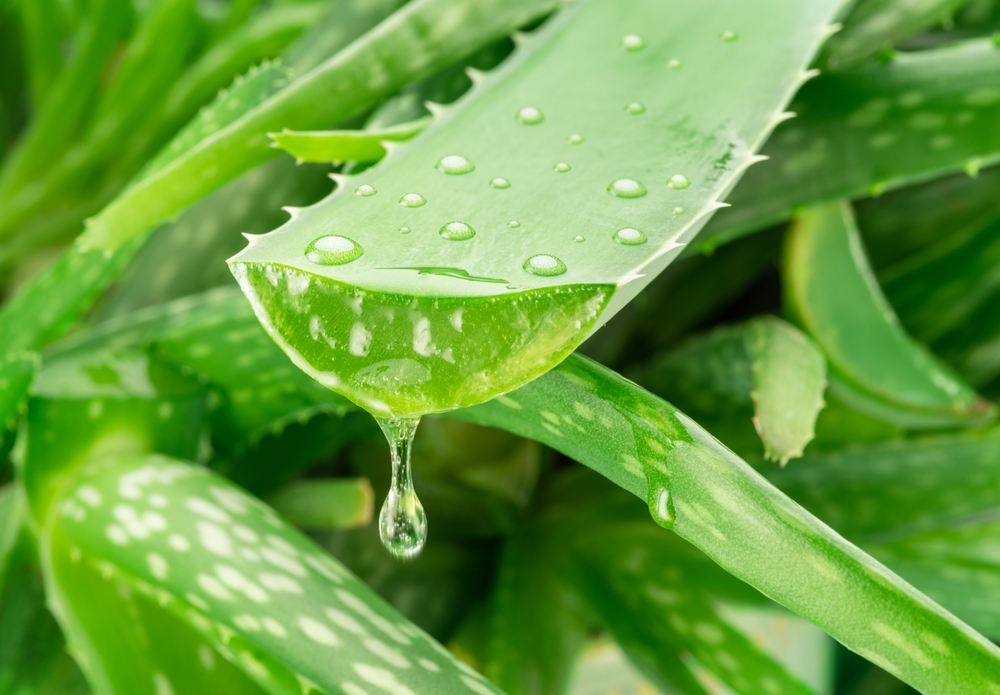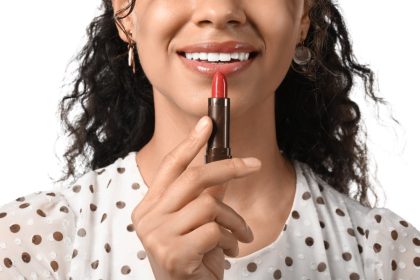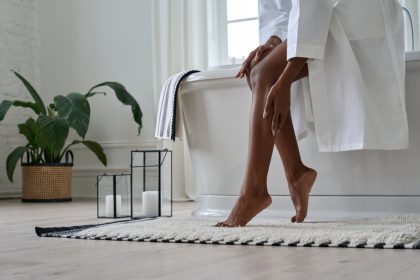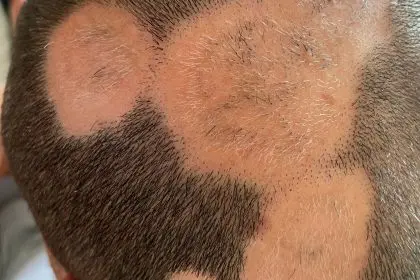You’ve probably slathered aloe vera on a painful sunburn, sighing with relief as the cool gel soothed your angry skin. But that humble succulent sitting on your windowsill isn’t just a one-trick plant. It’s actually hiding skin-transforming powers that could revolutionize your acne-fighting routine and finally fade those stubborn scars you’ve been battling for months. The best part? It won’t drain your wallet like those fancy serums with unpronounceable ingredients.
The bacteria-busting magic happening inside aloe leaves
Let’s talk about what’s actually causing those painful pimples first. Acne develops when excess oil and dead skin cells clog your pores, creating the perfect breeding ground for P. acnes bacteria to throw a wild party on your face. These unwelcome guests trigger inflammation, resulting in those red, swollen bumps we all dread seeing in the mirror.
Aloe vera contains natural salicylic acid and sulfur — two ingredients you’ll spot on many commercial acne products. These compounds gently exfoliate the skin, helping to unclog those congested pores while also killing acne-causing bacteria. Unlike harsh chemical treatments that carpet-bomb your face, aloe works more selectively, targeting the bad actors without completely stripping your skin’s protective barrier.
The plant’s gel is packed with polysaccharides that have impressive antibacterial and anti-inflammatory properties. These complex sugars help calm the angry redness while actively fighting the bacterial infection beneath the surface. Think of it as sending in a specialized tactical team rather than dropping a nuclear bomb on your skin’s ecosystem.
What makes aloe particularly effective is its ability to penetrate deeply into the skin layers, delivering its acne-fighting compounds directly to where they’re needed most. Many topical treatments just sit on the surface, unable to reach the root of the problem lurking deeper in the pore.
The inflammation fighter that works while you sleep
Anyone who’s dealt with acne knows that the redness and swelling can be almost as frustrating as the pimple itself. Even after the actual blemish begins to heal, that lingering inflammation can keep your skin looking angry and irritated for days.
This is where aloe vera really shines. The gel contains compounds called anthraquinones that are powerful anti-inflammatory agents. They work by blocking the pathways that signal inflammation in your skin, essentially telling your immune system to calm down and stop overreacting.
Aloe also contains C-glucosyl chromone, a naturally occurring anti-inflammatory that’s unique to the plant. This compound helps reduce the production of prostaglandins and thromboxanes, two types of lipids that trigger inflammation when released in the skin. By reducing these inflammatory markers, aloe helps blemishes heal faster with less redness and swelling.
The cooling sensation you feel when applying aloe isn’t just pleasant — it actually helps constrict blood vessels in the skin, immediately reducing redness and swelling. This makes it particularly effective for those painful, inflamed cystic pimples that seem to take forever to calm down.
Apply a thin layer of pure aloe gel to inflamed areas before bed, and you’ll likely notice significantly reduced redness and swelling by morning. It’s like sending your skin to anger management classes while you sleep.
The scar-fading secret weapon hiding in plain sight
Battling acne is hard enough, but dealing with the aftermath of scars can feel like adding insult to injury. Those dark marks and indented scars serve as unwelcome reminders of breakouts past, sometimes lingering for months or even years.
Aloe vera contains compounds called glycoproteins that accelerate wound healing by stimulating cell proliferation. In simpler terms, these compounds help your skin produce healthy new cells faster, gradually replacing the damaged scar tissue with fresh, normal skin.
The plant’s gel is rich in gibberellins and auxins, two growth hormones that stimulate the production of collagen and elastin fibers. These proteins are essential for rebuilding damaged skin and improving its elasticity and firmness. As your skin produces more collagen in scarred areas, indented acne scars gradually fill in and become less noticeable.
Aloe also contains aloesin, a compound that inhibits the overproduction of melanin in the skin. This makes it particularly effective for post-inflammatory hyperpigmentation — those stubborn dark spots left behind after a pimple heals. Regular application helps fade these marks by preventing the excess pigment from forming in the first place.
Perhaps most importantly, aloe’s zinc content supports every stage of the wound healing process. This essential mineral regulates inflammation, prevents bacterial growth, and promotes cell division, creating the optimal environment for your skin to repair itself naturally.
The moisture miracle that won’t clog your pores
One of the biggest skincare myths that needs to die is that oily, acne-prone skin doesn’t need moisture. In fact, stripping your skin of its natural oils often backfires spectacularly, causing it to produce even more oil to compensate for the dryness. This creates a frustrating cycle of oiliness, breakouts, harsh cleansing, and even more breakouts.
Aloe vera provides the perfect solution to this dilemma. Its gel is mostly water, making it incredibly lightweight and non-comedogenic, meaning it won’t clog your pores. Yet it still delivers impressive hydration by drawing moisture into the skin and creating a breathable barrier that prevents water loss.
The plant contains mucopolysaccharides, a type of sugar molecule that helps bind moisture to the skin. These molecules can hold several times their weight in water, providing deep hydration without heaviness or greasiness. This makes aloe ideal for acne-prone skin that still needs moisture but can’t tolerate heavy creams.
Proper hydration is actually essential for healing acne and fading scars. When your skin is dehydrated, its barrier function becomes compromised, making it more vulnerable to bacteria and inflammation. Well-hydrated skin also exfoliates more effectively, preventing the buildup of dead cells that can clog pores and trigger breakouts.
Using aloe as your primary moisturizer helps break the vicious cycle of over-cleansing and oil overproduction that plagues many people with acne. Your skin gets the hydration it craves without the pore-clogging heaviness of traditional moisturizers.
The vitamin cocktail absorbing directly into your skin
Aloe vera is essentially a natural multivitamin for your skin. It contains vitamins A, C, E, and B12 — all of which play crucial roles in maintaining skin health and fighting acne and scars.
Vitamin A helps regulate cell turnover, preventing the buildup of dead skin cells that can clog pores and lead to breakouts. It also promotes the healthy development of new skin cells, which is essential for healing scars and maintaining a smooth complexion.
The plant’s vitamin C content is a powerful ally in the fight against acne scars. This antioxidant is essential for collagen synthesis and helps brighten hyperpigmentation by inhibiting the enzyme responsible for producing melanin. Regular application of aloe helps deliver this skin-brightening vitamin directly to scarred areas.
Vitamin E in aloe works synergistically with vitamin C to fight free radical damage and protect skin cells during the healing process. This antioxidant also helps strengthen the skin barrier, making it more resilient against bacteria and environmental stressors that can trigger breakouts.
The B vitamins in aloe, particularly B12, help reduce inflammation and control the overproduction of oil in the skin. These vitamins also support the skin’s natural healing processes, helping blemishes resolve more quickly and with less scarring.
What makes aloe particularly effective is that these vitamins are delivered in a form that’s easily absorbed by the skin. Unlike many topical products where the active ingredients just sit on the surface, aloe’s unique composition allows these nutrients to penetrate deeply and actually reach the cells where they’re needed most.
The pH-balancing act your skin has been begging for
Your skin has a naturally acidic pH of around 4.5-5.5, which helps maintain its protective barrier against bacteria and environmental damage. Many cleansers and treatments disrupt this delicate balance, leaving your skin vulnerable to the bacteria that cause acne.
Aloe vera gel has a pH of around 4.5, almost perfectly matching your skin’s natural level. This makes it an excellent pH balancer, helping restore your skin’s protective acid mantle after cleansing or exposure to harsh products.
When your skin’s pH is properly balanced, its natural defense mechanisms function optimally. The acidic environment inhibits the growth of P. acnes bacteria while supporting the beneficial microorganisms that keep your skin healthy. This creates an environment where acne struggles to develop in the first place.
A balanced pH also ensures optimal function of the enzymes involved in shedding dead skin cells. When these enzymes can work properly, your skin exfoliates naturally, preventing the buildup that leads to clogged pores and breakouts.
For those using prescription acne treatments like retinoids or benzoyl peroxide, which can be extremely drying and disruptive to the skin’s pH, aloe provides the perfect complementary therapy. It helps mitigate irritation while supporting the skin’s natural healing processes.
The real-world ritual that actually works
Getting the most from aloe vera requires using it correctly. The good news is that unlike complicated 12-step skincare routines, incorporating aloe into your regimen is refreshingly simple.
For the purest benefits, harvest gel directly from a plant if possible. Simply cut a mature leaf at the base, drain the yellow latex, then fillet it to extract the clear inner gel. This fresh gel contains the highest concentration of active compounds and none of the preservatives found in commercial products.
If using store-bought aloe, look for products with at least 95% pure aloe vera and minimal additives. Many commercial “aloe” products contain very little actual aloe and lots of fillers, fragrance, and alcohol, which can irritate acne-prone skin.
For active breakouts, apply a thin layer of pure aloe gel directly to clean skin up to three times daily. For best results, leave it on overnight as a sleeping mask, allowing the active compounds to work while your skin’s natural repair processes are most active.
To fade existing scars, consistency is key. Apply aloe to scarred areas twice daily for at least eight weeks. Remember that scar remodeling is a gradual process, and visible improvement takes time. Take weekly photos in the same lighting to track your progress, as daily changes can be too subtle to notice.
For a more potent treatment, combine fresh aloe with a few drops of tea tree oil for enhanced antibacterial benefits, or mix with a quarter teaspoon of turmeric for additional anti-inflammatory and brightening effects. Just be aware that turmeric can temporarily stain the skin, making this better as an overnight treatment.
The beauty of aloe vera lies in its simplicity and affordability. Unlike expensive acne systems that require multiple products and complicated routines, this single ingredient provides a complete treatment approach that addresses virtually every aspect of acne and scar management. Your skin gets exactly what it needs to heal, without the confusion and irritation that often comes with layering multiple active ingredients.















